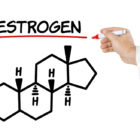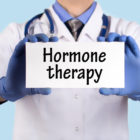Some women can’t live without it; others won’t come near it. Some love it; others hate it. But no matter how you fell about estrogen, it’s still the only government approved drug therapy in the United States and Canada for treating menopause-related symptoms.
Before 2002 and the publishing of the Women’s Health Initiative study, a very large percentage of women in menopause were taking estrogen or estrogen plus progestin or progesterone. After the study, which showed that estrogen plus progestin caused an increased risk of breast cancer, heart attack, blood clots and stroke, many women went cold turkey and stopped everything. I remember my phone ringing off the hook with concerned women. Half the calls were from women wanting to know if they could stay on their hormones. The other half were women looking for an alternative. Since that original study, we’ve learned a lot more about estrogen. Here are a few things every woman in or near menopause should know about hormone therapy.
First, the terms:
Drugs that contain estrogen are divided into two categories:
- ET for Estrogen Therapy. These contain estrogen only.
- EPT for estrogen-progesterone therapy.
- HT stands for hormone therapy and can refer to either ET or EPT.
- HRT stands for hormone replacement therapy but it isn’t currently used as much.
Now the estrogen types:
There are four types of estrogens.
- Human Estrogens. There are three human estrogens – estradiol, also called 17b-estradiol, is the strongest one. Estrone is 50-70% less active. Estriol is 10% as active as estradiol. Estradiol is the only government approved single-estrogen product.
- Non-Human Estrogen. These are also called conjugated estrogens or CE. These are a mixture of at least 10 estrogens obtained from natural sources, typically, the urine of pregnant mares. Their effects are caused by the sum of the 10 or more estrogens.
- Synthetic Estrogens. These are manufactured in chemical plants and resemble human and non-human estrogens.
- Plant-Based Estrogens. These are also called phytoestrogens. Some act like an estrogen and others act like an anti-estrogen, depending on which part of the body the phytoestrogens affects. These are not prescription hormones.
Whether or not to take estrogen and or progesterone is a very personal decision that needs to be individualized. For those of you considering HT, I strongly suggest you have a detailed discussion with your healthcare provider. HT is still a great decision for many women, but it has to be individualized.
In order to help you prepare for that discussion and to help you get the most out of your visit, I’ve written an E-book on estrogen and progesterone to serve as your guide. I’m offering it FREE to my readers as a special gift. Click here for FREE instant access and download this hormone guide E-book now.



